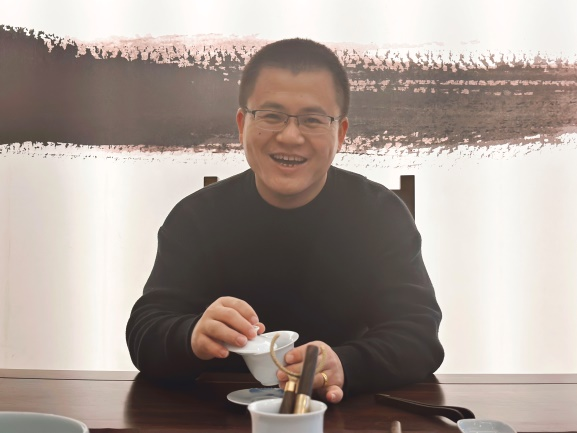
李占明,博士(2016年毕业于浙江大学),副教授,硕士生导师,九三学社社员,新加坡国立大学访问学者,江苏省双创博士、省科技副总。
E-mail:lizhanming@just.edu.cn
联系电话:18868180268
欢迎专业为食品、计算机、农学、机械、生物等专业的本科生联系报考硕士研究生(食品加工与安全,食品科学与工程)
工作经历
韦德国际始于英国 韦德国际1946食品质量与安全系 2020.04 — 至今
新加坡国立大学 食品科学技术系 (访问学者) 2018.03 — 2019.04
中国计量大学 生命科学学院食品质量与安全系 2016.03 — 2020.04
新加坡国立大学 食品科学技术系 (联合培养) 2015.09— 2015.12
科研情况
主要从事农业环境安全与农产品品质控制的相关研究工作,包括农产食品品质与质量控制、农产食品溯源分析、智能农业装备等领域;参与或主持国家级省部级课题多项。已在《Environment International》、《Science of the Total Environment》、《Food Chemistry》、《Food Chemistry: X》、《食品科学》等行业权威SCI/EI期刊发表论文30余篇。兼任浙江省科技项目专家库专家、中国化学会会员、中国毒理学会会员;受邀担任《Journal of Food Processing and Preservation》学术编辑、《Foods》期刊客座编辑、《Journal of Future Foods》青年编委;受邀担任《LWT-Food Science and Technology》、《ACS Sustainable Chemistry & Engineering》、《Foods》、《Frontiers in Chemistry》、《Journal of Food Measurement and Characterization》、《Journal of Food Process Engineering》、《食品科学》等多本SCI/EI期刊的审稿人。
荣誉及获奖情况
1. 2018年荣获校级优秀班主任
2. 2018年中国国际科普作品大赛三等奖(指导教师)
3. 2019年亚太数学建模竞赛三等奖(研究生组,指导教师)
4. 2020年度迅杰光远杯近红外光谱优秀学术论文提名奖
5. 2021、2022年度《食品科学》优秀审稿人
6. 2021、2022年度《中国果菜》优秀青年编委
7. 2021年入选江苏省双创博士
8. 2021年第三届果蔬类功能食品开发及产业发展大会会议论文一等奖
9. 2022全国老员工生命科学竞赛三等奖(指导教师)
10. 2022年度中国商业联合会科学技术奖三等奖(排名第三)
11. 2022年度本科生优秀毕业论文(指导教师)
12. 2022年度E方知库年度优秀论文奖
13. 2023本科生优秀毕业设计团队(第一指导教师)
14. 2023全国老员工生命科学竞赛三等奖(指导教师)
15. 2023全国老员工生命科学竞赛二等奖(指导教师)
16. 2023年荣获铭和奖教金
17. 2023年入选江苏省科技副总
近期发表的部分科研论文
[1] Li et al. (2023). Identification of aged-rice adulteration based on near-infrared spectroscopy combined with partial least squares regression and characteristic wavelength variables. Food Chemistry: X, 2023, 17, 100539 (JCR Q1)
[2] Wu et al. Identification of Tartary buckwheat (Fagopyrum tataricum (L.) Gaertn) and common buckwheat (Fagopyrum esculentum Moench) using gas chromatography–mass spectroscopy-based untargeted metabolomics. Foods, 2023, 12(13), 2578 (JCR Q1)
[3] Li et al. Unique roles in health promotion of dietary flavonoids through gut microbiota regulation: Current understanding and future perspectives. Food Chemistry, 2023, 133959 (JCR Q1, ESI热点论文)
[4] Li et al. Novel Metal–organic framework materials in-focus detection and adsorption cues for environmental pollutants. Reviews of Environmental Contamination and Toxicology, 2022, 260(1), 1-18 (JCR Q1, E方知库2022年度最受关注论文)
[5] Ye et al. A comprehensive overview of emerging techniques and chemometrics for authenticity and traceability of animal-derived food. Food Chemistry, 2022, 134216 (JCR Q1, ESI高被引论文)
[6] Yu et al. Roles of plant-associated microorganisms in regulating the fate of Hg in croplands: A perspective on potential pathways in maintaining sustainable agriculture. Science of the Total Environment, 2022, 155204 (IF2021=10.753, JCR Q1)
[7] Yu et al. Orientin and vitexin attenuate lipopolysaccharide-induced inflammatory responses in RAW264. 7 cells: a molecular docking study, biochemical characterization, and mechanism analysis. Food Science and Human Wellness, 2022, 11(5), 1273-1281 (JCR Q1)
[8] Cao et al. Effects of oral administration of bamboo (Dendrocalamus membranaceus) leaf flavonoids on the antioxidant capacity, caecal microbiota, and serum metabolome of gallus gallus domesticus. Frontiers in Nutrition, 2022, 9 (JCR Q2)
[9] Li et al. Geographical Origin Differentiation of Rice by LC–MS-Based Non-Targeted Metabolomics. Foods, 2022, 11(21), 3318 (JCR Q1)
[10] Song et al. Advancement of protein-and polysaccharide-based biopolymers for anthocyanin encapsulation. Frontiers in Nutrition, 2022, 9 (JCR Q2)
[11] Wang et al. Green tea polyphenols upregulate the Nrf2 signaling pathway and suppress oxidative stress and inflammation markers in D-galactose-induced liver aging in mice. Frontiers in Nutrition, 2022, 130 (JCR Q2)
[12] Li et al. Speciation, transportation, and pathways of cadmium in soil-rice systems: A review on the environmental implications and remediation approaches for food safety. Environment International, 2021, 156, 106749 (IF2021=13.352, JCR Q1, ESI高被引论文)
[13] Ren et al. Characteristics and application of fish oil-in-water pickering emulsions structured with tea water-insoluble proteins/κ-carrageenan complexes. Food Hydrocolloids, 2021, 114, 106562 (IF2021=11.504, JCR Q1, ESI高被引论文)
[14] Mao et al. Dispersive solid-phase extraction using microporous metal-organic framework UiO-66: Improving the matrix compounds removal for assaying pesticide residues in organic and conventional vegetables. Food Chemistry, 2021, 345, 128807 (JCR Q1, ESI高被引论文)
[15] Ren et al. Effect of heat-treated tea water-insoluble protein nanoparticles on the characteristics of Pickering emulsions. LWT, 2021, 149, 111999 (JCR Q1)
[16] Huang et al. Characterization of the taste compounds in 20 pungent spices by high-performance liquid chromatography. Journal of Food Measurement and Characterization, 2021, 15(2), 1680-1692 (JCR Q2)
[17] Cai et al. Novel extraction methods and potential applications of polyphenols in fruit waste: a review. Journal of Food Measurement and Characterization, 2021, 15(4), 3250-3261 (JCR Q2)
[18] Mao et al. Analysis of organophosphorus and pyrethroid pesticides in organic and conventional vegetables using QuEChERS combined with dispersive liquid-liquid microextraction based on the solidification of floating organic droplet. Food Chemistry, 2020, 309, 125755 (JCR Q1)
[19] Li et al. Effect of pectin addition on the bioaccessibility of four bamboo leaf flavonoids during simulated in vitro gastrointestinal digestion. Food Science/SHIPINKEXUE, 2020, 41(11), 43-48.
[20] Zhou et al. Discrimination of Tetrastigma hemsleyanum according to geographical origin by near-infrared spectroscopy combined with a deep learning approach. Spectrochimica Acta Part A: Molecular and Biomolecular Spectroscopy, 2020, 238, 118380. (JCR Q2)
